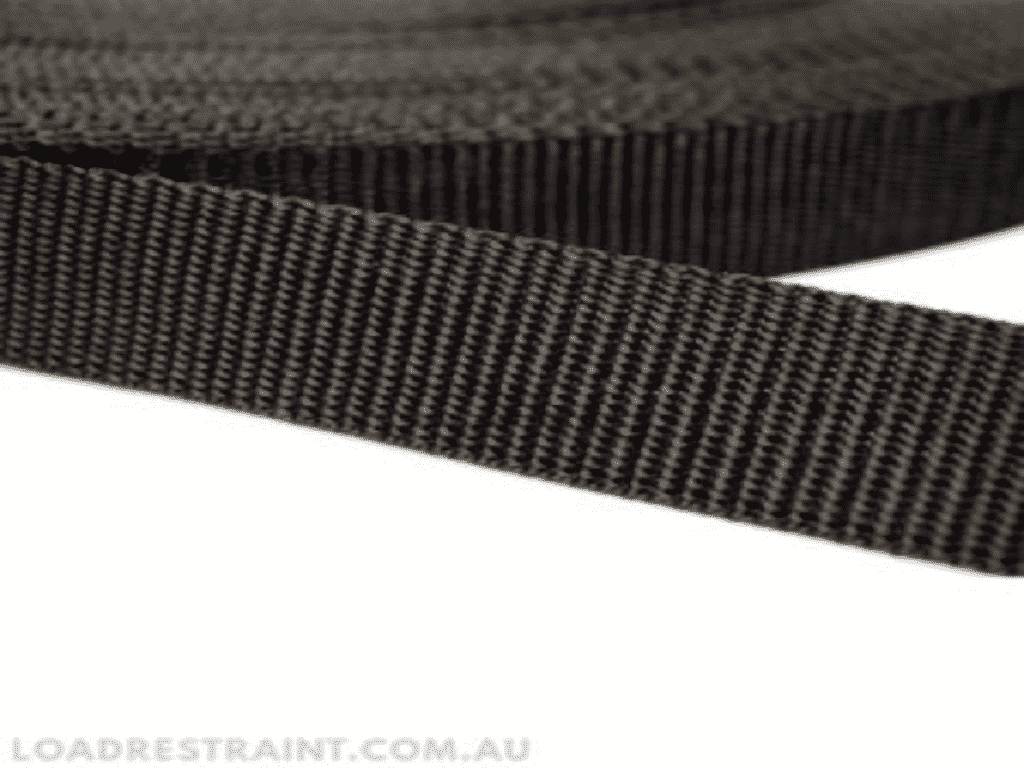Are you looking for a simple tool to make securing in-transit furniture a breeze? Planning a hiking trip and need to reinforce your backpack before you go? Building your own race cart and looking for the perfect seatbelt material to ensure your safety? Or are you simply looking to improve your load restraint system?
You may be surprised to discover that all the above scenarios lead you to the same simple solution: webbing straps! Today you’ll find out all about the basics of webbing straps and how to pick the right option for your needs.
Strap in, because you’re in for an educational read.
What Are Webbing Straps?
It’s important to first understand exactly what webbing straps are as well as how and why they’re used. Webbing straps are narrow strips of incredibly strong woven material that are commonly used as an alternative to rope and chains. A webbing strap consists of webbing, tensioners and end fittings.
These straps are used in all kinds of industries to meet all kinds of needs. On a small scale they are used for creating or repairing purses, as a decorative furniture trim and even as DIY lanyards or dog leashes.

In terms of commercial and industry-specific applications, webbing straps are underappreciated tools that make many tasks easier. They are mainly used in industries such as:
- Automobile safety
- Parachuting
- Climbing
- Furniture manufacturing
- Transporting
- Load restraint
Webbing straps are known for their versatility, durability, elasticity and strength. Generally, they come in 25-, 35-, 50-, 75-, and 100-mm widths. Almost all webbing straps are black in colour. Every now and then you may come across straps that have been dyed white or another bright colour for easy identification.
The Different Types of Webbing Straps
As is the case with all products, different types of webbing straps are suited to different applications. There are three main types of webbing straps. In order to ensure that you pick the right type for the job you have in mind, it’s important to know the properties of each.
To pick the perfect webbing strap you need to consider its intended application, its break strength, its stretch capacity, its UV resistance, and its level of mildew resistance. All of these factors will help you decide which type of webbing strap you’ll need – as well as which to avoid.
Polyester Webbing
- Is resistant to mildew and rot
- Ideal for outdoor usage
- Excellent UV resistance
- Has a smooth and shiny finish
- Doesn’t float in water
- Low stretch capacity (10%)
- Incredibly strong with a break strength of 2,000 to 10,000 lbs.
Nylon Webbing
- Is relatively resistant to mildew and rot
- Not recommended for outdoor usage
- Moderate UV resistance
- Has a smooth and shiny finish
- Doesn’t float in water
- Moderate stretch capacity (25%)
- Very strong with a break strength of 2,500 to 7,000 lbs.
Polypropylene Webbing
- Is resistant to mildew and rot
- Ideal for outdoor usage
- Low UV resistance
- Floats in water
- High stretch capacity (50%)
- Fairly strong with a break strength of 700 lbs.
Distinguishing Webbing Strap Material
Many people discover that they already have webbing in their pile of scraps. If you find yourself in such a position but have no idea which type of webbing you have, fret not because it’s surprisingly easy to distinguish webbing materials.
Does It Float?
The easiest way to determine the type of webbing you have is to perform a floatation test. Simply cut off a small strip of the webbing and place the cut-off in a glass of water. There is only one type of webbing that floats in water and that is polypropylene webbing.
If you’ve performed the floatation test and your webbing did not float, it’s not polypropylene. Now it’s time to move on to the burn test.
How Does It Burn?
To perform the burn test, place the flame of a handheld lighter against the edge of your cut-off. Nylon webbing will produce a sharp celery-like odour, a black smoke and eventually a white ash. When polyester webbing burns it produces a sweet yet chemical-like smell, a thick black smoke, and a black ash.
That’s A Wrap… Or a Strap!
After reading this article you should have a clear idea of which webbing strap option will be right for your needs. You may even have the perfect webbing strap at home already, just waiting for you to identify it. Webbing straps serve a multitude of purposes and picking the right one is imperative.
Will you be opting for polyester or polypropylene webbing? Or is a webbing strap made from nylon your best bet?
Even if you don’t have a specific need in mind right now, webbing straps are fantastic tools to have on hand as you never know when you might need them. As Benjamin Franklin once said, “By failing to prepare, you are preparing to fail”.
